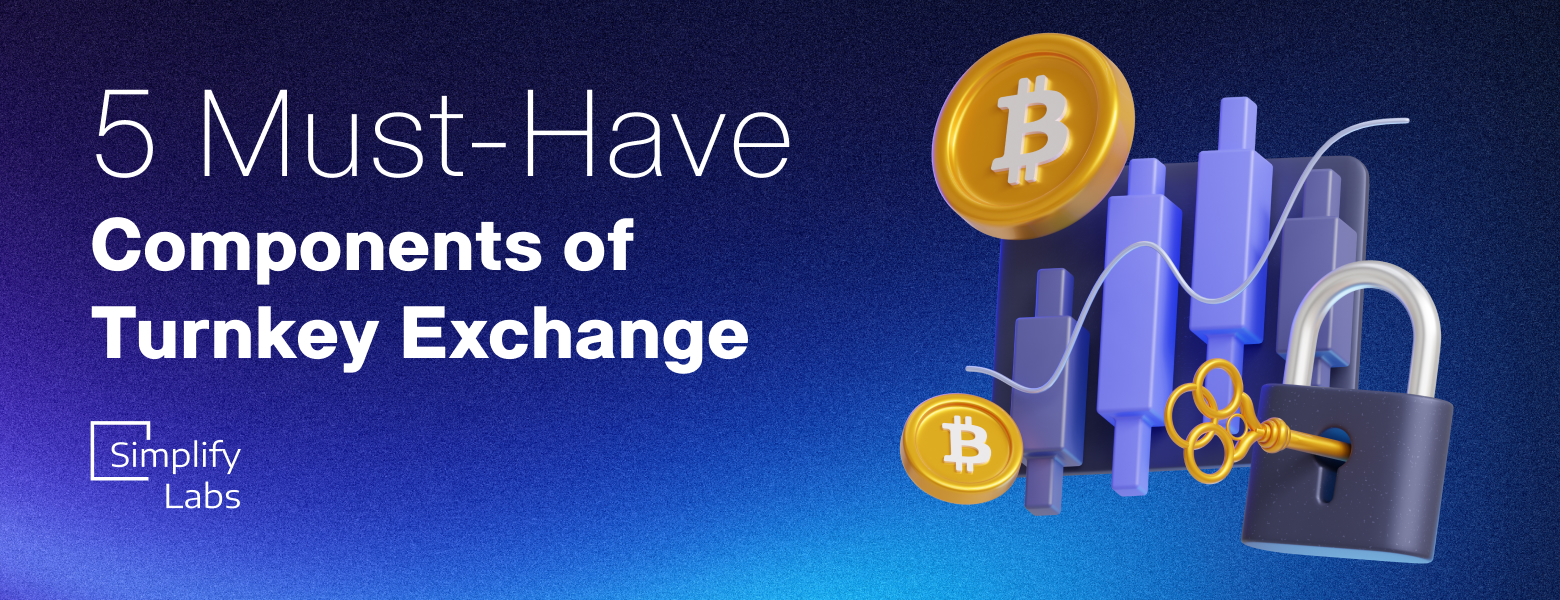Knowing what crypto liquidity is and its role in trading is kind of a skill. This skill will help you trade more efficiently, increasing your wins in the long run. We put together this guide to show you some of the ABCs of crypto liquidity, how to find a reliable provider in 2024, and some of the top players in the crypto market.
Short Summary
- Crypto liquidity helps stabilize the market and improve trading efficiency.
- Knowing trustworthy crypto liquidity requires first understanding market regulations and compliance, trading volume, speed of order execution, and risk management.
- Partnering with a crypto liquidity provider involves verifying compatibility, negotiating fees and setting up connections to ensure successful integration.
Understanding Crypto Liquidity
Crypto liquidity refers to how well a crypto exchange platform is managed to let users quickly buy or sell digital assets without drastically affecting market price. While it is high, markets are considered stable. So, there is a branch of businesses known as crypto liquidity providers who help ensure this stability.
Things like trading volume, market depth, regulations, and even global events affect crypto liquidity. Essentially, whatever decides the number of crypto traders in the market ultimately determines crypto liquidity.
Market Liquidity
The same principle of crypto liquidity applies to market liquidity, except that the area to watch for the changing of prices is the market. However, the determinants of this liquidity are different. Examples are a business’ total market shares or tokens and trading volume. Depending on how these factors are, an investor can rely on market liquidity to buy or sell assets without worry about strong price movements..
The Role of Crypto Liquidity Providers
Crypto liquidity providers are the bridge connecting buyers and sellers. They strongly affect how stable the market is and how well trades can be executed; but, before determining bid and ask prices, they also depend on things like trading volume, market volatility, and the liquidity of an asset.
Factors Affecting Cryptocurrency Liquidity
Trading Volume
A crypto exchange platform’s trading volume is the total number of digital assets that users trade on it within a specified period. Because of how this works and depends on users, higher trading volume implies higher liquidity. Trading volume is thus one way to determine how healthy a market is.
Market Depth
The depth of a market is measured by how many buy and sell orders are available at different prices. Deep markets have high liquidity, and vice versa. This is because such a market suggests the presence of active users at the time of measurement.
Regulations
Regulations are the guidelines that put caps on certain activities relating to trading crypto. Generally, when these regulations are many, liquidity reduces—because regulations reduce the number of active users in the market.
World Events
World events and economic news have similar effects on liquidity, depending on how they are received. Things like political instability, economic recession, and even natural disasters can drive crypto prices up or down. In other words, they can determine how many users are willing to come out and play in the market.
Identifying Reliable Crypto Liquidity Providers
Regulatory Compliance
Regulatory compliance generally helps crypto platforms earn user trust. The more trust they wield, the more they can attract trading activity. So, a reliable crypto liquidity provider is one that complies with relevant regional and market standards. Otherwise, they wouldn’t value the trust of users or do anything to boost it.
Trading Volume
The same principle as regulatory compliance applies here: your crypto liquidity provider can only be counted as reliable when they have a high trading volume. This would mean that they can maintain a liquid market themselves, which becomes a good indication of what they can do for you.
Technological Capabilities
The more useful and advanced a provider’s tech capabilities are, the better, especially when they have algorithmic trading systems and connectivity options. Such features make it easier for users to execute trades and enjoy a seamless experience.
Risk Management
The lower the risks tolerated by your provider, the better. This would mean that they protect their network with measures like KYC/AML compliance, fraud detection systems, and risk monitoring tools. Such tools protect crypto platforms from unnecessary losses. Having them is also a good indicator when looking for reliable crypto liquidity providers.
Top Crypto Liquidity Providers in 2024
B2Broker
B2Broker provides both tech and liquidity, as well as access to seven asset classes and more than 140 crypto pairs. Even though it is new, B2Broker’s services are especially fitted to be used by brokers and exchange platforms—even traditional financial institutions.
Binance
Binance is one of the platform-faces of the crypto industry. It is quite likely the largest market for crypto trading and serves as a digital place for users to trade, analyze trades, and store their assets. By partnering with Binance, you can benefit from its high-liquidity market and the many opportunities attached to this.
SimplifyLabs
SimplifyLabs is a more recent example of innovative crypto liquidity providers, but is just as hot as any other. It extends its liquidity services to individuals and institutions, digital or traditional. Its Simple Liquidity Hub runs orders at the speed of approximately 1.5 million operations per second per trading instrument. And minimal slippage is recorded per transaction.
SimplifyLabs’ liquidity is compact, with open spots for users interested in trading popular cryptos like Bitcoin, Ethereum, USDC and USDT. And why not, when the liquidity is high, commission costs are low, and the crypto asset marching process is seamless?
Bitfinex
Bitfinex came around in 2012 but is still well-known for having cutting-edge trading tools. Like others on this list, it does not only provide crypto liquidity but also lets users deploy advanced trading features on its platforms. It is owned and operated by iFinex Inc. and serves both novice and experienced traders.
Balancer
Balancer is the option for you if you are only interested in decentralized finance (DeFi) and nothing else. It provides liquidity, yes, but also offers automated market-making. But this is primarily because it is a DeFi protocol running on Ethereum.
How to Partner with a Crypto Liquidity Provider
Compatibility Checks
Crypto liquidity providers are not all squares or all circles. They differ in terms of things like API integrations, data feeds, and even the level of technological capabilities. You should thus confirm how well a provider fits your specs before throwing yourself at it. Other good things to look out for are efficiency of platform and interoperability—unless you want to get stuck with one provider with no option to change your mind later.
Fee Negotiations
Of course, you have to consider negotiating fees with crypto liquidity providers before deciding on the most suitable. It is not about getting the one that costs the least, but the one that’ll make you the most profits. You need to take your time, therefore, and be as flexible and open as it benefits you.
Setting Up Connections
Finally, you need to set up connections with the crypto liquidity provider you ‘zing’ with. This requires you giving them your API key and any other important information. It is only after you set up these connections that you will be able to use the services of your crypto liquidity provider.
Summary
To understand crypto liquidity and partner with a reliable provider is a solid step to crypto trading success. Because the market is ever-changing, this information removes you from losing before starting. It is only now that you know these things that you can truly seize the opportunities in crypto with confidence.
Frequently Asked Questions
How do I choose a crypto liquidity provider?
When choosing a crypto liquidity provider, check out everything there is to know about your options: reputation and track record, regulatory compliance, depth and asset coverage, fees and scalability—everything. Then choose the most suitable provider.
Where can I see crypto liquidity?
Check CoinMarketCap or any other coin-ranking website. This will help you quickly view the daily volume of each cryptocurrency and know their liquidity levels. It will also tell you which tokens are a little or very liquid.
Which crypto exchange has the most liquidity?
Currently, Binance tops the list of largest and most popular crypto exchanges. It is currently estimated to trade more than $2 billion and 1 million transactions per second. Without a doubt, it is currently the crypto exchange with the most liquidity in the market.
How much do liquidity providers make crypto?
Liquidity providers can make up to a 25% annual interest rate on transaction fees. For example, by providing liquidity on Uniswap, LPs earn fees of around 0.3%—which can be lower for stable assets and higher for the more exotic pairs.
What is the significance of trading volume in cryptocurrency liquidity?
Trading volume significantly determines crypto liquidity. High trading volume means that many traders are buying and selling in the market. High trading volume therefore implies high liquidity, and vice versa.






